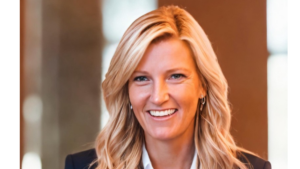Influencer marketing is booming, and I wanted to take a closer look at exactly how it’s being bought. So, I’ve been speaking to those at the coalface to understand what’s really going on within this fascinating and complex market.
What’s obvious is that the Influencer marketing ecosystem would be an interesting Lumascape as there is an increasing variety of players jostling for position. For instance:
- Advertising conglomerates, some of which have created centralized groups, for example GroupM’s INCA
- Media agencies have a few buying points from their digital teams to their partnership teams, social and SEO teams
- PR agencies
- Social agencies, which have, quite rightly, repositioned to social and influencer agencies, such as Adwaiz
- Dedicated influencer marketing agencies such as We Are Spring, PEG, Goat, Summer
- Publishers and we are seeing a trend to create separate agencies within a publisher. In 2017, Evolve Media created The Studio.London and News Corp launched The Fifth, its influencer agency, this year
- Talent agencies, which represent the talent and have pivoted slightly to a more agency offering such as Gleam, which has been part bought by DentsuAegis
- Influencer platforms, which are now repositioning to an agency proposition, with Takumi and Buzoole two examples
- Specialist influencer technology partners, such as The Influencer’s Diary
The following insights are from several of the industry buyers of influencer marketing
What does experience mean in influencer marketing?
Izan Nash, Marketing Director, ITP Live UK, says “I’ve worked in influencer marketing since the early days when brands started working with bloggers. I feel that I have grown with some of the top influencers today who have become really successful and are leaders in what they do”.
Everyone else came at some stage later and their roles continue to be defined. Years of experience in advertising and PR informs the nuanced influencer space. I guess it’s safe to say 3+ years qualifies as experienced.”
Emily Goodyear, Business Director, MindShare says, “I’ve got nine years’ experience in digital marketing, have spent time in-house, at digital agency Stickyeyes and for the last three years have been at Mindshare in the SEO team.
We typically approach influencer marketing with a different viewpoint to more brand-led campaigns, in that we look for influencers who have a blog with significant authority, as well as a strong following on social channels.
Over the years, I’ve worked on influencer marketing campaigns for brands like Jaguar Land Rover, Converse and Dreams and have found that getting the right influencers who believe in the brand makes all the difference in getting genuine, engaging high quality content.”
The need for education
As with any emerging trend, education is key. Claire Morris, Head of Influencer marketing, Publicis, says: “We know that consumer behaviour has changed. In a digital era, people don’t take things on trust, they value real experiences, peer guidance and expert recommendations. They want connections that are relatable, unfiltered and genuine.
Integrating influencer marketing throughout the overall marketing mix can help improve the value exchange and build trust in the influencer, and ultimately the brand. Our job is to bring this to life for brands and help them understand how to navigate the influencer sphere to avoid the pitfalls of inauthentic content that offer little to no value for their audiences, help them validate their influencer investment and demonstrate the true value of influencers within their media plans.”
Yenan Wang, Director of Content & Influencer marketing at PHD, agrees. “Absolutely. With digital channels constantly evolving, the role of influencer marketing is also shifting towards a more measurable and cost-effective model. Many brands still try to understand what that looks like. “
Brand safety and transparency
There is a wave of new technologies entering the market, but adoption isn’t quite there yet. We’re seeing great strides in the YouTube space with advanced brand safety and suitability technologies such as Channel Factory.
These technologies are available for Instagram and influencer marketing, but adoption hasn’t been widespread. The biggest concerns around influencer marketing are around brand safety and fraudulent activity. CMOs cite fraud and non-authentic content as their number one concern.
What’s interesting is the agencies’ view on this, from a brand safety and commercial perspective.
“Despite concerns over lack of transparency and fake followers, two-thirds (65%) brands still plan to increase spend on influencer marketing over the next 12 months. It’s clear that Influencer marketing works, but the question of measurement remains our industry’s single biggest challenge to increasing investment,” says Wang. “Unless brands can make meaningful comparisons between their investment in Influencer marketing and other media, the industry will fail to move from test-and-learn to a firm line item on a media plan.”
A line on the marketing plan
Influencer marketing is predicted to be worth between $5 billion and $10 billion by 2020 but in terms of a becoming a standard line on brands’ marketing plans, the consensus is that it’s not quite there yet.
Publicis’s Claire Morris though notes the role of influencer marketing is shifting and becoming strategically important and ever more pervasive: “As the number of influencer collaborations has grown over the last few years, and as marketers continue looking for new ways to engage their audiences, influencers are becoming an increasingly important line on marketing plans.
Influencers are being increasingly recognised as a means of circumnavigating ad avoidance as well as cutting through social ad clutter to reach relevant audiences that may have been previously been unexposed to a brand. But most interestingly for us is the rising trend of working with influencers as key sources of creative content to populate and diversify a brand’s paid, owned and earned ecosystems.
This shift in perception positions influencers as an extension of creative teams, changing the way we liaise with influencers, to ensure that the campaign content not only benefits their followers, but also gives brands fantastic content that can be re-purposed to support wider marketing activity.”
Yeman Wang at PHD says, “a lot of clients don’t understand the importance of Influencer marketing which should be given a seat at the table alongside the other marketing disciplines early on. With digital channels constantly evolving, the role of influencer marketing is also shifting towards a more measurable and cost-effective model. Many brands are still trying to understand what that looks like.”
In summary, this is a high-growth market and technology is maturing. Buyers are becoming educated and confidence is growing. If you haven’t yet made a move, it’s definitely time to take a look at influencer marketing.
About the author:
Maria Cadbury has 19 years strategic advertising experience. She has built influencer marketing Agencies and ran one of the top 10 adtech networks. More recently, Maria has been working across the social platforms championing the best in market brand safety and fraud transparency tools for both YouTube and Instagram.









